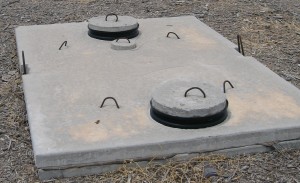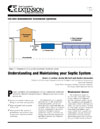 The septic tank is the most cost efficient method available to treat residential wastewater. But for it to work properly, you need to choose the right kind of septic tank for your household size and soil type, and you need to maintain it regularly.
The septic tank is the most cost efficient method available to treat residential wastewater. But for it to work properly, you need to choose the right kind of septic tank for your household size and soil type, and you need to maintain it regularly.
A septic tank is an enclosed watertight container that collects and provides primary treatment of wastewater by separating solids from the effluent. It removes the solids by slowing down the wastewater flow in the tank and allowing the settleable solids to settle to the bottom of the tank while the floatable solids (fats, oil, and greases) rise to the top.
To provide time for the solids to settle, detention time should be at least 24 hours.
Some of the solids are removed from the water, some are digested, and some are stored in the tank. Up to 50 percent of the solids retained in the tank decompose; the rest accumulate as sludge at the tank bottom and need to be removed periodically by pumping the tank. Tanks should be pumped by a licensed pumper every 5-7 years for most residential systems and inspected annually.
Related Resources:
 Operation and Maintenance Checklist: Septic, Trash, and Processing Tanks
Operation and Maintenance Checklist: Septic, Trash, and Processing Tanks
 Conventional Septic Tank/Drain Field (and in Spanish)
Conventional Septic Tank/Drain Field (and in Spanish)
 Septic Tank/Soil Absorption Field (and in Spanish)
Septic Tank/Soil Absorption Field (and in Spanish)

